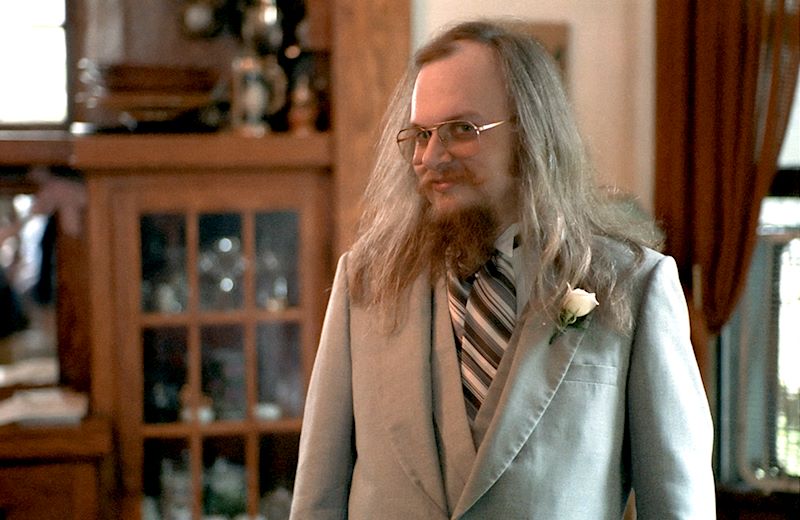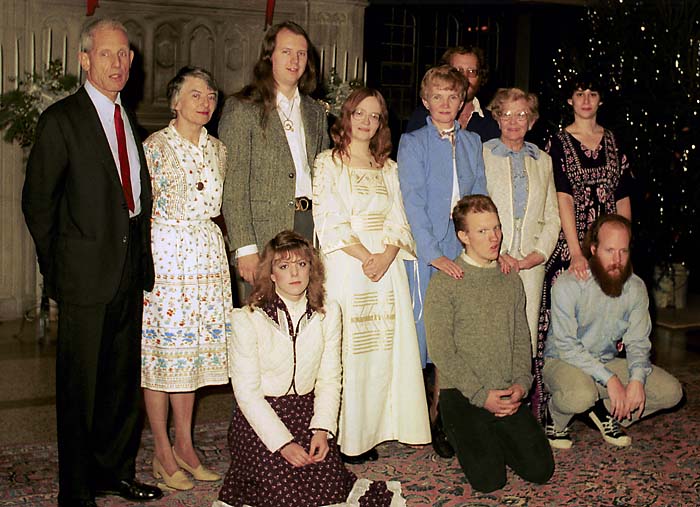Well, not unexpected if you ever did it, or know anybody who did it. But quick searches don’t find any discussion of it online, including in modern blogs by people who say they shoot weddings on film all the time.
I’m sure the exact details varied by photographer; in fact they would have had to, to take full advantage of their equipment. My knowledge comes from the late 60s and early 70s, mostly (I knew people doing weddings professionally then). Anybody serious used medium format, Hasselblad if they could possibly afford it (one friend started with a pair of Mamiya 124Gs, and upgraded to Hasselblads while I knew him; I bought one of his Mamiyas).
There are a few photos you just absolutely had to get. Specific portraits and group shots, the ring exchange, kissing the bride, feeding each other cake, the first dance; things like that. Of course you wanted good shots of all of those, and you wanted lots of other good shots as well, but if you didn’t manage to get those basic shots, it was going down on your permanent karmic record. No five star ratings for you!
There are two big areas where film was more uncertain while shooting the wedding, and the complex scheme I’m going to describe was carefully designed to protect you so far as possible from both of them.
First of all, you didn’t know if your camera was actually working. You could tell if the flash went off, and you could tell if it made the right noises, but that level of observation wouldn’t detect most problems below “camera is locked up”. You couldn’t, of course, just check the images on the LCD on the back!
Second, when you sent your film to the lab, you didn’t know whether they were going to screw it up. All the film sent in at once was very likely to go into the machine all at once, and if the chemistry was borked that afternoon, too bad!
What to do?
Well, what you do is exactly what you do for pretty much every problem of unpredictable failure. You employ redundancy!
Specifically, you make sure that you take each absolutely necessary shot multiple times, using different cameras and on different rolls of film. And you then carefully manage the rolls of film to be sure they don’t all go to the lab in the same batch.
In fact, you need four copies to be really sure, you might have one bad camera and the lab ruins a batch, so you need two copies on different rolls from each camera to be really safe. This is much easier if your cameras have interchangeable film backs (one more reason Hasselblad dominated wedding photography for so long).
I suspect people used their own made-up terminology, but I learned this as “A rolls” and “B rolls”, and the rule was that A rolls went to the lab in a different batch, on a different day, from B rolls, so they couldn’t both be ruined in the same accident. Similarly with an “A camera” and a “B camera” (no doubt some high-end wedding photographers, especially those using a second shooter, had more than two cameras, but 2 Hasselblads with some duplicate lenses and flashes was a stretch for most photographers).
So you had to keep track, in your head or on paper, of which of the required shots you had in AA, AB, BA, and BB forms. And the rest of the time, you needed to use both cameras a lot, not just using one and having a backup.
While at the same time doing your actual job as a photographer superbly; this added complexity saves you from some lab and camera failures, but doesn’t protect you from your own errors.
Most of the time, that’ll give you 4 versions of the key pictures to pick the best from, which is nice. But what’s vital is to protect yourself from having no versions of one of the key pictures.
I do hope the people shooting weddings on film today remember this. I can’t believe that labs are so much more reliable today that lab failure is now off the table, and the film cameras are decades older which isn’t likely to make them more reliable either.



